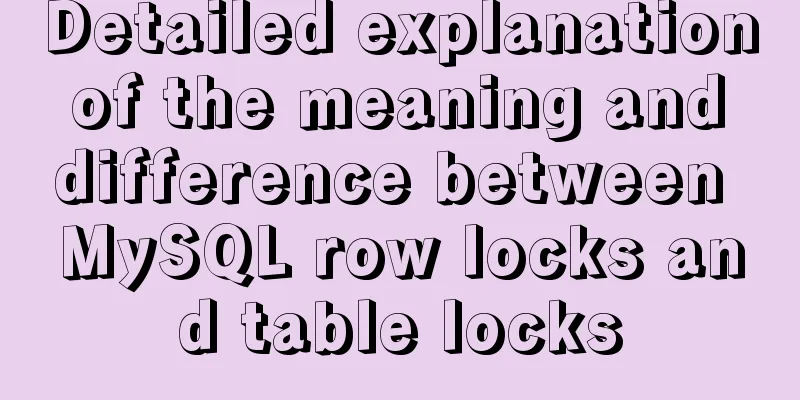Use of js optional chaining operator

Preface The optional chaining operator (?.) allows reading the value of a property located at the end of a chain without having to explicitly verify that each reference in the chain is valid. The difference is that if the reference is null or undefined, no error will occur and the short-circuit return value of the expression is undefined. When used with a function call, if the given function does not exist, undefined is returned. The optional chaining operator makes expression roots shorter and more concise when trying to access object properties that may not exist. The optional chaining operator is also helpful when exploring the contents of an object, when you are unsure which properties must be present. Optional Chaining Operator (?.) grammar obj?.prop obj?.[expr] func?.(args) describe The optional chaining operator provides a way to simplify accessing the value of a connected object when the reference or function passed through the connected object may be undefined or null. let nestedProp = obj.first && obj.first.second To avoid errors, before accessing obj.first.second, make sure that the value of obj.first is neither null nor undefined. If you simply access obj.first.second without verifying obj.first, an error may be thrown. let nestedProp = obj.first?.second By using the ?. operator instead of the . operator, JavaScript implicitly checks to make sure obj.first is neither null nor undefined before trying to access obj.first.second. If obj.first is null or undefined, the expression will short-circuit the calculation and return undefined directly. This is equivalent to the following expression, but no temporary variable is actually created: let temp = obj.first let nestedProp = ((temp === null || temp === undefined) ? undefined : temp.second) useWe can use chainable operators with the babel compiler. babel yarn add @babel/plugin-proposal-optional-chaining --dev Add .babelrc file
{
"plugins": ["@babel/plugin-proposal-optional-chaining"]
}
Use in create-react-app By default create-react-app does not allow modification of the babel configuration, here we need to install two additional modules to allow supplementation of the default configuration. yarn add customize-cra react-app-rewired --dev Add config-overrides.js file
const { useBabelRc, override } = require('customize-cra');
module.exports = override(useBabelRc());
Modify package.json
"scripts": {
"start": "react-app-rewired start",
"build": "react-app-rewired build",
"test": "react-app-rewired test --env=jsdom"
}
eslint After installing the babel compiler, you can use the ?. operator. But if you use eslint, you need to install babel-eslint to recognize this new syntax. yarn add babel-eslint --dev Add .eslintrc file
{
"parser": "babel-eslint",
"rules": {
"strict": 0
}
} Use in vscode The js validator of vscode currently does not recognize the ?. operator, so there will be an error warning:
To resolve the error warning: Install the vscode extension ESLint, search and install ESLint in the extension store. Modify vscode configuration (.vscode/settings.json):
{
"eslint.alwaysShowStatus": true,
"eslint.autoFixOnSave": true,
"javascript.validate.enable": false, // Mainly this, turn off vscode's js validator "[javascript]": {
"editor.formatOnSave": false,
},
"[javascriptreact]": {
"editor.formatOnSave": false,
},
}
Source: Optional Chaining Operator This is the end of this article about the use of js optional chaining operator. For more relevant js optional chaining operator content, please search 123WORDPRESS.COM’s previous articles or continue to browse the following related articles. I hope everyone will support 123WORDPRESS.COM in the future! You may also be interested in:
|
<<: Centos7.5 installs mysql5.7.24 binary package deployment
>>: MYSQL8.0.13 free installation version configuration tutorial example detailed explanation
Recommend
Detailed explanation of the core concepts and basic usage of Vuex
Table of contents introduce start Install ① Direc...
Detailed explanation of MySQL startup options and system variables examples
Table of contents Boot Options Command Line Long ...
Introduction to Vue3 Composition API
Table of contents Overview Example Why is it need...
How to get the height of MySQL innodb B+tree
Preface The reason why MySQL's innodb engine ...
Will Update in a Mysql transaction lock the table?
Two cases: 1. With index 2. Without index Prerequ...
Implementation of MySQL master-slave status check
1. Check the synchronization status of A and B da...
Difference between MySQL btree index and hash index
In MySQL, most indexes (such as PRIMARY KEY, UNIQ...
Implementation of element input box automatically getting focus
When making a form in a recent project, I need to...
Summary of mysqladmin daily management commands under MySQL (must read)
The usage format of the mysqladmin tool is: mysql...
WeChat applet implements a simple handwritten signature component
Table of contents background: need: Effect 1. Ide...
What I learned while building my own blog
<br />In one year of blogging, I have person...
MySQL implements increasing or decreasing the specified time interval for all times in the current data table (recommended)
The DATE_ADD() function adds a specified time int...
Solution to overflow:hidden failure in CSS
Cause of failure Today, when I was writing a caro...
MySQL uses UNIQUE to implement non-duplicate data insertion
SQL UNIQUE constraint The UNIQUE constraint uniqu...
Teach you a trick to permanently solve the problem of MySQL inserting Chinese characters
Table of contents Preface first step: Step 2: Mod...










